2011 North AmericanCoins & PricesA GUIDE TO U.S., CANADIAN AND MEXICAN COINS20th Edition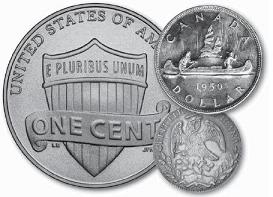 David C. Harper, Editor
David C. Harper, Editor
Harry Miller & Thomas Michael, Market Analysts The World's Best-Selling Coin Books Copyright 2010 F+W Media, Inc. All rights reserved. No portion of this publication may be reproduced or
The World's Best-Selling Coin Books Copyright 2010 F+W Media, Inc. All rights reserved. No portion of this publication may be reproduced or
transmitted in any form or by any means, electronic or mechanical, including photocopy, recording, or any information storage and retrieval system, without permission in writing from the publisher, except by a reviewer who may quote brief passages in a critical article or review to be printed in a magazine or newspaper, or electronically transmitted on radio, television, or the Internet. Published by  Krause Publications, a division of F+W Media, Inc.
Krause Publications, a division of F+W Media, Inc.
700 East State Street Iola, WI 54990-0001
715-445-2214 888-457-2873
www.krausebooks.com To order books or other products call toll-free 1-800-258-0929
or visit us online at www.shopnumismaster.com ISSN 1935-0562
ISBN-13: 978-1-4402-1286-4
ISBN-10: 1-4402-1286-4
eISBN 13: 978-1-4402-1559-9 Cover Design by Donna Mummery
Designed by Sandi Carpenter
Edited by Debbie Bradley Printed in the United States of America  Contents
Contents
 Preface
Preface Providing coin collectors with accurate, independently produced pricing information on collectible coins has become a trademark of Krause Publication's numismatic division in its 55 years of publishing. Visit our Web site at www.krausebooks.com for more information about us.
Providing coin collectors with accurate, independently produced pricing information on collectible coins has become a trademark of Krause Publication's numismatic division in its 55 years of publishing. Visit our Web site at www.krausebooks.com for more information about us.
We employ a full-time staff of market analysts who monitor auction results, trading on the Internet and trading at major shows.  This information is compiled by our analysts and they determine what price most accurately reflects the trading that has occurred for each date and mintmark in each grade listed in North American Coins & Prices. By studying this information and referring back to it repeatedly, a collector can arm himself with the necessary knowledge to go out in the market and make wise purchasing decisions. It must be remembered that these prices are intended solely as a guide. They are neither offers to buy or sell. Because prices do fluctuate, those that appear in this book may be in some cases obsolete by the time of publication.
This information is compiled by our analysts and they determine what price most accurately reflects the trading that has occurred for each date and mintmark in each grade listed in North American Coins & Prices. By studying this information and referring back to it repeatedly, a collector can arm himself with the necessary knowledge to go out in the market and make wise purchasing decisions. It must be remembered that these prices are intended solely as a guide. They are neither offers to buy or sell. Because prices do fluctuate, those that appear in this book may be in some cases obsolete by the time of publication.
By checking the more than 40 price charts in the U.S. section, you can get a feel as to how price swings have occurred since 1972. U.S. coins are the most popularly collected issues in the world. This is attributable in part to the popularity of coin collecting in the United States, but collectors in many other countries also covet collectible U.S. coins.
After collecting U.S. coins for a while, many collectors in the United States branch out into issues of Canada and Mexico. These coins also enjoy a popular following in their countries of origin. Thus, North American Coins & Prices brings together pricing information on all three of these countries. But this book also takes the price-guide concept a step further by providing information on the nuts and bolts of collecting coins: acquiring coins, grading them, organizing them into a collection, storing them properly and much more. 
 A Small Beginning
A Small Beginning
The U.S. 
 A Small Beginning
A Small Beginning
The U.S.
Mint grew from a modest start By Robert R. Van Ryzin It was a small beginning but a significant one. In July 1792, a site for the new U.S. Mint not yet having been secured, 1,500 silver half dismes were struck on a small screw press nestled in the cellar of a Philadelphia building owned by sawmaker John Harper. Though some have since categorized these early emissions of the fledgling U.S. coins. coins.
It is true that this limited coinage, the first since passage of the act establishing the Mint on April 2, 1792, pales by comparison to modern U.S. Mint presses. Todays machines can churn out up to 750 coins a minute, striking as many as four coins at a time and boasting yearly mintages in the billions. But it is also true that these first small pieces struck from silver and stamped with a plump Liberty on the obverse and a scrawny eagle in flight on the reverse have tremendous historical importance. For within what Washington would declare in his 1792 address to Congress as a small beginning were the seeds of a monetary system that has lasted more than 200 years and has become the study and admiration of many. Before the U.S.
Mint Collectors today can trace much of the nations development and learn of its struggles and growth through its coinage: from a cumbersome system first proposed by Robert Morris, a Revolutionary War financier and first superintendent of finance, to the refinements tendered by Thomas Jefferson and Alexander Hamilton, which firmly placed the nation on an easily understood decimal system of coinage. At first there was little coinage in circulation, except for foreign coins that arrived through trade or in the purses of the first settlers. Despite a dire need for coinage in the Colonies, Great Britain considered it a royal right and granted franchises sparingly. Much of the Colonial economy, therefore, revolved around barter, with food staples, crops, and goods serving as currency. Indian wampum or bead money also was used, first in the fur trade and later as a form of money for Colonial use. Copper pieces were produced around 1616 for the Sommer Islands (now Bermuda), but coinage within the American Colonies apparently didnt begin until 1652, when John Hull struck silver threepence, sixpence and shillings under authority of the General Court of Massachusetts.
This coinage continued, with design changes (willow, oak and pine trees), through 1682. Most of the coins were dated 1652, apparently to avoid problems with England. In 1658 Cecil Calvert, second Lord Baltimore, commissioned coins to be struck in England for use in Maryland. Other authorized and unauthorized coinages including those of Mark Newby, John Holt, William Wood, and Dr. Samuel Higley all became part of the landscape of circulating coins. In the 1780s this hodgepodge of coinage was augmented by influxes of counterfeit British halfpenny coins and various state coinages.
In terms of the latter, the Articles of Confederation had granted individual states the right to produce copper coins. Many states found this to be appealing, and merchants in the mid-1780s traded copper coins of Vermont, Connecticut, Massachusetts, New Jersey, and New York. Not all were legal issues; various entrepreneurs used this as an invitation to strike imitation state coppers and British halfpence. Mutilated and worn foreign coins also circulated in abundance. Included among these were coins of Portugal, Great Britain and France, with the large majority of the silver arriving from Spain. The accounting system used by the states was derived from the British system of pounds, shillings and pence.
Next page
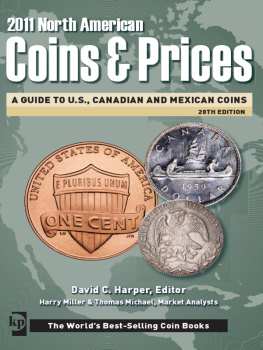
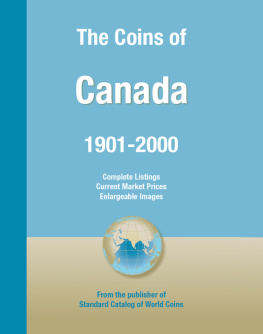
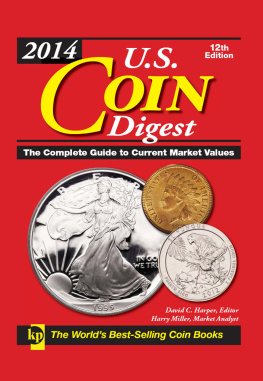
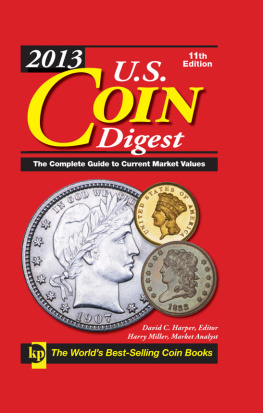
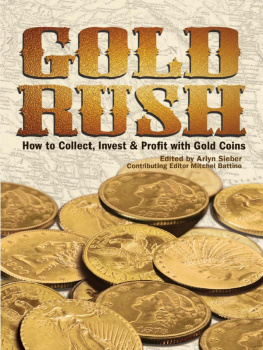
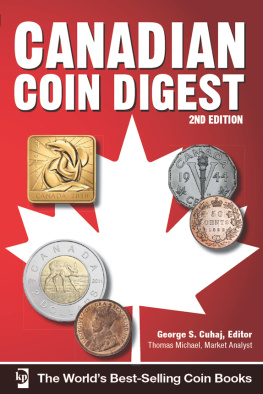

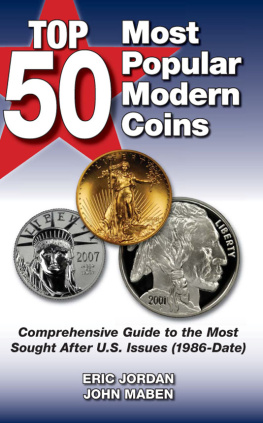

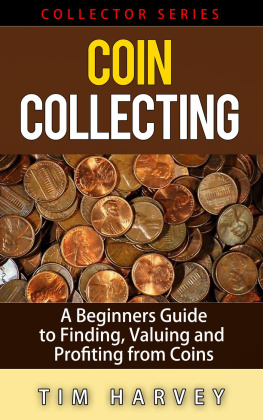

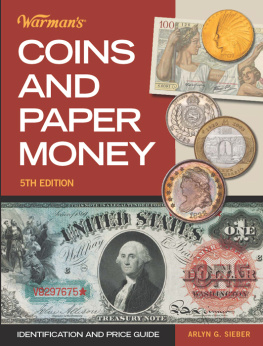
 David C. Harper, Editor
David C. Harper, Editor The World's Best-Selling Coin Books Copyright 2010 F+W Media, Inc. All rights reserved. No portion of this publication may be reproduced or
The World's Best-Selling Coin Books Copyright 2010 F+W Media, Inc. All rights reserved. No portion of this publication may be reproduced or Krause Publications, a division of F+W Media, Inc.
Krause Publications, a division of F+W Media, Inc. Contents
Contents This information is compiled by our analysts and they determine what price most accurately reflects the trading that has occurred for each date and mintmark in each grade listed in North American Coins & Prices. By studying this information and referring back to it repeatedly, a collector can arm himself with the necessary knowledge to go out in the market and make wise purchasing decisions. It must be remembered that these prices are intended solely as a guide. They are neither offers to buy or sell. Because prices do fluctuate, those that appear in this book may be in some cases obsolete by the time of publication.
This information is compiled by our analysts and they determine what price most accurately reflects the trading that has occurred for each date and mintmark in each grade listed in North American Coins & Prices. By studying this information and referring back to it repeatedly, a collector can arm himself with the necessary knowledge to go out in the market and make wise purchasing decisions. It must be remembered that these prices are intended solely as a guide. They are neither offers to buy or sell. Because prices do fluctuate, those that appear in this book may be in some cases obsolete by the time of publication.